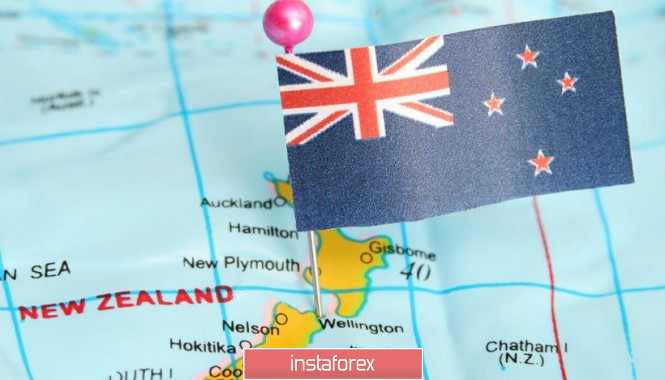The New Zealand dollar, paired with the US currency, continues to dive down to multi-year lows. At the moment, the pair is trading at the base of the 62nd figure and the last time the price was in this area was four years ago in the fall of 2015. Judging by the dynamics of decline, the NZD/USD pair can update the 4-year low at 0.6156, approaching the levels of a decade ago, when the pair was trading within the 50s. Such a rapid decline in prices is primarily due to the trade war between the United States and China. This is the cornerstone of all the problems of New Zealand as the Reserve Bank of New Zealand focuses on this fundamental factor.

After the July interest rate cut by 50 basis points at once, the NZD/USD pair demonstrated a pronounced downward trend on the weekly chart, which sometimes pleases the bears with large-scale price pullbacks up to a 100-point correction. This allows sellers to open short positions at a better price, pushing the pair further into the price gap. The last time this opportunity was presented to traders literally at the beginning of this week. The NZD/USD pair crashed last Friday on the news that China is introducing additional duties on the United States, but on Monday, it adjusted by almost a hundred points in response to Donald Trump's "conciliatory" comments. At this stage, it is possible to profitably open sell orders since the price began to show a downward movement again at the very next day.
All of these suggest that the game against the New Zealander now has practical meaning, and with more or less large-scale correction, it is advisable to consider short positions in a pair. Such a strategy will be relevant until Beijing and Washington sign the notorious deal. Only this fact will change the fundamental background of the pair radically. In the meantime, the market is living in the state of a trade war and in anticipation of further easing of monetary policy by the RBNZ.
Members of the New Zealand regulator will meet only twice this year and both times in the fall (September 25 and November 13). More recently, most experts were inclined to believe that the regulator would lower the interest rate by another 25 basis points, that is, to 0.75% at one of these meetings. But after another round of the global trade war, the likelihood of a different scenario is growing. According to some analysts, the RBNZ will lower the rate at each meeting this year, which will end the year at 0.50%. Also, immediately after the August meeting, New Zealand central bank head Adrian Orr said that regulators might as well have to deal with negative rates. In the event of a crisis, the regulator could lower the key interest rate to -0.35%. This suggests that the Reserve Bank is not going to stop at what they have achieved and they are ready to move on and on in the coming year.
Of course, such prospects strong pressure on the New Zealand dollar. The NZD/USD bulls are virtually helpless since it is rare that upward correction occurs mainly due to the weakness of the American currency or when Beijing and Washington come together as part of the negotiation process. But even in such cases, the NZD/USD bears make use of the situation accordingly and opening short positions, thereby, repaying the upward impulse. The fundamental background of recent weeks confirms the correctness of this strategy. Despite the declared intentions, de facto the United States and China are still too far from the moment the deal was concluded.

It is also worth noting that NZD/USD traders should be wary of New Zealand macroeconomic reports. Strong numbers can create the illusion of a trend reversal but this is just an illusion. Internal macroeconomic statistics play an important, but far from a decisive role for RBNZ members in the context of determining further steps. The focus is on the global trade conflict, and the associated uncertainty. According to Adrian Orr, the trade war negatively affects consumer confidence, the investment climate, as well as exports and actually paralyzes business activity in the country. Incidentally, excellent data on the labor market were published on the eve of the 50-point rate cut in New Zealand. Almost all components came out in the "green zone", significantly ahead of forecast values.
From a technical point of view, the potential for the development of a bearish trend of the NZD/USD pair remains. On all of the "senior" timeframes (except for the monthly chart), the pair is located on the lower line of the Bollinger Bands indicator and under all the lines of the Ichimoku indicator. The support level is the lower line of the Bollinger Bands indicator on the monthly chart, which is the target of the downward movement that corresponds to the mark of 0.6250.
The material has been provided by InstaForex Company - www.instaforex.com